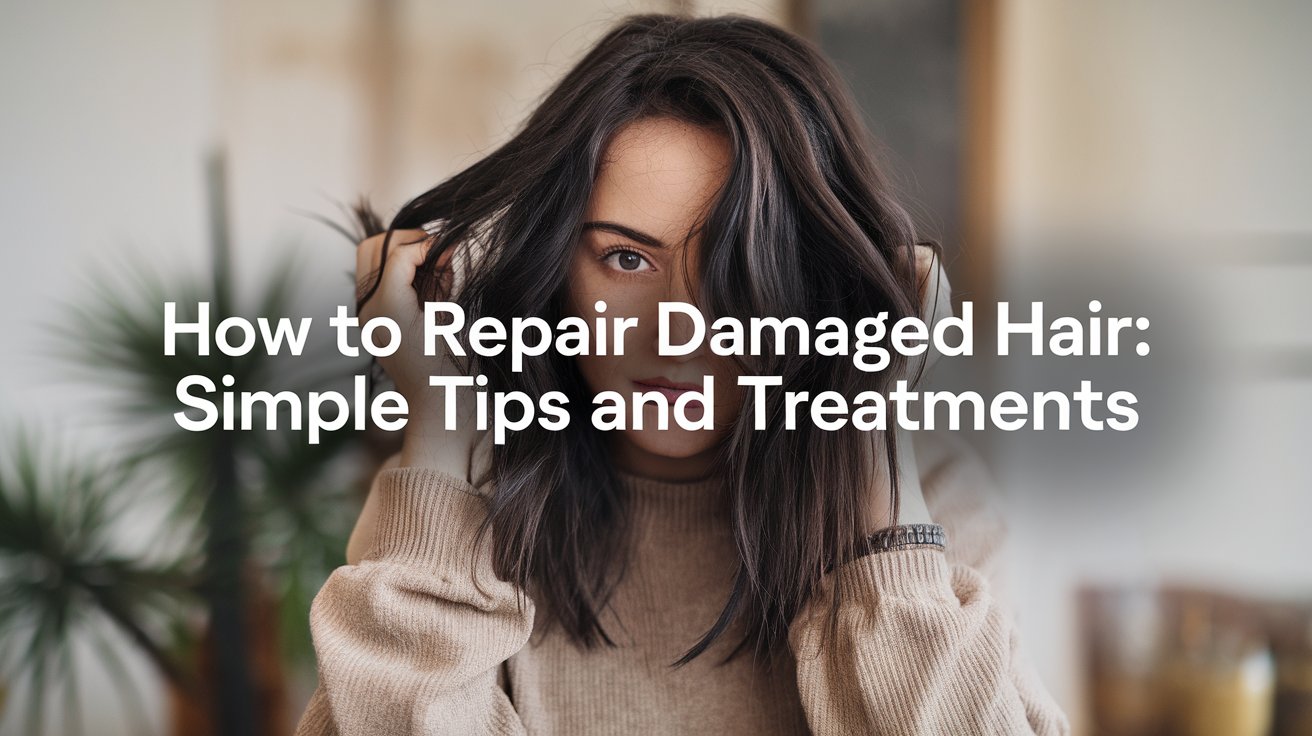Damaged hair can be a frustrating experience for many, often resulting from a combination of factors such as heat styling, chemical treatments, environmental stressors, and improper care. Fortunately, with the right strategies and products, you can effectively repair damaged hair and restore its health and vitality. In this article, we will discuss simple tips and treatments that can help you repair damaged hair and achieve a beautiful, healthy mane.
Understanding the Causes of Hair Damage
Before diving into repair methods, it’s essential to understand what causes hair damage. Some common culprits include:
- Heat Styling: Frequent use of hair dryers, straighteners, and curling irons can strip moisture from hair, leading to dryness and breakage.
- Chemical Treatments: Hair coloring, bleaching, and perming can weaken the hair structure, making it more susceptible to damage.
- Environmental Factors: Sun exposure, humidity, pollution, and chlorine from swimming pools can contribute to hair damage and dryness.
- Poor Hair Care Practices: Infrequent trims, excessive washing, or using harsh hair products can exacerbate hair damage.
Simple Tips to Repair Damaged Hair
Here are some effective strategies to help you repair damaged hair and promote healthier growth:
- Use a Repair Damaged Hair Shampoo Choosing the right shampoo is a crucial step in repairing damaged hair. Look for a Repair Damaged Hair shampoo that is formulated with nourishing ingredients such as keratin, oils, and proteins. These ingredients help strengthen hair, restore moisture, and improve elasticity.
- Condition Regularly Conditioners are essential for hydrating and detangling hair. Use a deep conditioning treatment or a leave-in conditioner once a week to provide extra moisture and nutrients. Focus on applying conditioner to the ends of your hair, where damage is most likely to occur.
- Limit Heat Styling Reducing your use of heat styling tools can significantly improve your hair’s condition. When you do use heat, apply a heat protectant spray to shield your hair from damage. Opt for air-drying or styling techniques that require less heat, such as braiding for waves.
- Trim Regularly Regular trims are vital for maintaining healthy hair. Schedule a trim every 6 to 8 weeks to remove split ends and prevent further damage from traveling up the hair shaft. This simple step can improve your hair’s appearance and health.
- Incorporate Hair Masks Hair masks provide intensive hydration and repair. Look for masks that contain ingredients like coconut oil, argan oil, or honey, which are known for their moisturizing and restorative properties. Apply a hair mask once a week for optimal results.
- Protect Your Hair from the Environment Protect your hair from sun exposure by wearing hats or using hair products with UV filters. When swimming, apply a leave-in conditioner or hair oil before entering the water to create a barrier against chlorine or saltwater.
- Stay Hydrated and Eat a Balanced Diet Healthy hair starts from within. Ensure you’re drinking plenty of water and consuming a balanced diet rich in vitamins and minerals. Foods high in omega-3 fatty acids, protein, and vitamins A, C, and E can help support hair health.
- Avoid Tight Hairstyles Tight hairstyles can lead to breakage and damage. Opt for loose styles and avoid pulling your hair back too tightly. When using hair ties, choose soft, fabric-covered options to minimize strain on your hair.
Treatments for Severely Damaged Hair
If your hair is severely damaged, consider these additional treatments:
- Oils and Serums: Hair oils like argan, jojoba, or olive oil can deeply nourish and hydrate your hair. Apply a small amount to the ends of your hair for added moisture and shine.
- Professional Treatments: Salon treatments such as keratin treatments, deep conditioning, or Olaplex can provide significant improvements for severely damaged hair. Consult with a professional stylist to find the best treatment for your hair type.
- Scalp Treatments: A healthy scalp is essential for healthy hair growth. Consider using scalp treatments that address dryness or dandruff, as a healthy scalp promotes healthier hair.
Conclusion
Repairing damaged hair takes time and consistent care, but with the right tips and treatments, you can restore your hair’s health and vitality. Incorporating a Repair Damaged Hair shampoo, using nourishing conditioners, limiting heat styling, and protecting your hair from environmental stressors are all essential steps in your hair care routine. By following these simple tips, you’ll be well on your way to achieving strong, beautiful hair.





One thought on “How to Repair Damaged Hair: Simple Tips and Treatments”